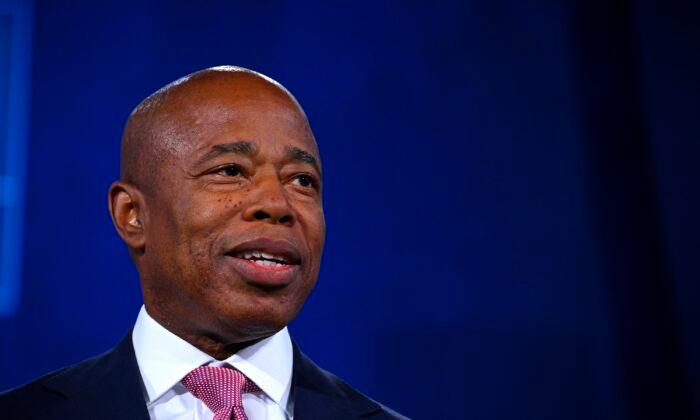New York City Mayor Eric Adams announced an immediate directive on Tuesday detailing protocols for removing and treating mentally ill people from the city’s streets and subways.
“Today, we are embarking on a long-term strategy to help more of those suffering from severe and untreated mental illness find their way to treatment and recovery,” he continued.
“We can no longer deny the reality that untreated psychosis can be a cruel and all-consuming condition that often requires involuntary intervention, supervised medical treatment, and long-term care,” he added. “We will change the culture from the top down and take every action to get care to those who need it.”

Involuntary Intervention
Adams said “job one” was making it “universally” clear to outreach workers, hospital workers, and police that New York law already “allows us to intervene when mental illness prevents a person from meeting their basic human needs, causing them to be a danger to themselves.”The mayor said it had been a common misunderstanding that involuntary intervention is only legal if the person is violent, suicidal, or presenting a risk of imminent harm.
“This myth must be put to rest,” Adams said. “Going forward, we will make every effort to assist those who are suffering from mental illness and whose illness is endangering them by preventing them from meeting their basic human needs.”
Adams stressed that outreach workers, hospital personnel, and police would do everything they could to persuade the designated severely mentally ill people to voluntarily accept “services.” But that involuntary intervention would be provided if the person can’t “overcome the person’s unawareness of their own illness.”

The city will launch a hotline staffed by clinicians who will provide guidance to police officers when they come across a homeless person in crisis. The officer can use the hotline to describe what they’re seeing to a clinician before they make a judgment call about removing the individual and transporting them to a hospital for evaluation.
This next phase of the city’s plan comes after consultations with homeless individuals, experts involved in evaluating and providing care to individuals in psychiatric crisis, and state officials, Adams said.
Legislative Agenda
Adams laid out an 11-point legislative agenda that “takes aim at gaps” in state law which his office said makes it harder for the city to help “its most vulnerable residents with severe mental illness.”Part of the legislative agenda will be to reform existing laws to make sure doctors don’t decide to discharge a psychiatric patient just because they’re no longer displaying the concerning behavior that landed them in the hospital.
“All too often, a person enters the hospital in crisis and gets discharged prematurely because their current behavior is no longer as alarming as it was when they were admitted,” Adams said. “The law should require hospital evaluators to consider not just how the patient is acting at the moment of evaluation but also their treatment history, recent behavior in the community, and whether they are ready to adhere to outpatient treatment.”
Adams also wants to broaden the types of licensed mental health workers who would perform these evaluations to free up psychiatrists so they can “spend more time providing medical care directly to patients.”
Adams said New Yorkers expect the city to help the mentally ill homeless people on its streets and subways.
“The very nature of their illnesses keeps them from realizing they need intervention and support. Without that intervention, they remain lost and isolated from society, tormented by delusions and disordered thinking,” Adams said.





